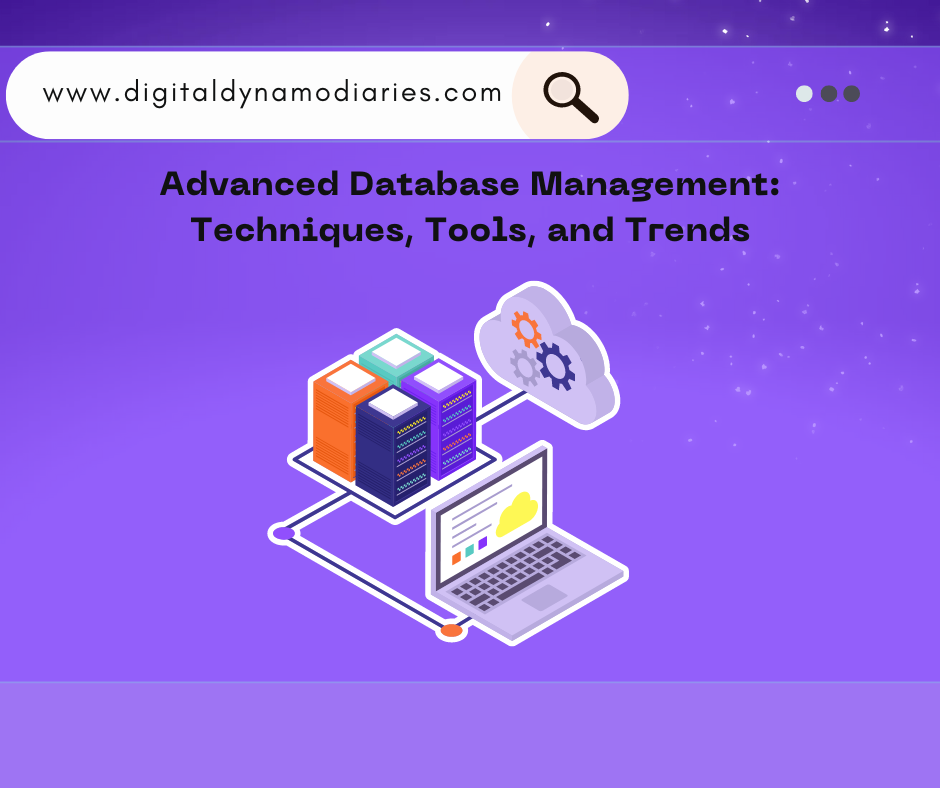Advanced Database Management: Techniques, Tools, and Trends
In today’s data-driven world, advanced database management systems (DBMS) play a crucial role in handling, organizing, and securing vast amounts of information. As businesses and organizations grow, they demand more sophisticated, scalable, and efficient database management solutions. This article will delve into the key techniques, tools, and trends in advanced database management systems, providing readers with a thorough understanding of the subject.
What is an Advanced Database Management System?
An advanced database management system offers features beyond basic database operations, such as data mining, data warehousing, distributed databases, and cloud-based solutions. These systems support large-scale data processing, real-time analytics, and complex queries, making them essential for enterprises that handle big data.
Key Features of Advanced DBMS
Advanced DBMSs optimize data storage, retrieval, and management through a variety of features. Some of the key features include:
1. Data Integrity and Security: Advanced DBMSs ensure data integrity and security through robust mechanisms. They implement techniques like encryption, access control, and auditing to protect sensitive information.
2. Scalability: These systems efficiently scale to handle growing volumes of data without compromising performance. Businesses can expand their database capabilities with both horizontal and vertical scaling options.
3. Support for Complex Queries: Advanced DBMSs provide tools that execute complex queries and perform real-time analytics. This capability is vital for businesses that rely on data-driven decision-making.
4. Data Redundancy and Recovery: To prevent data loss, advanced DBMSs include redundancy features and automated backup and recovery processes. These features ensure data remains available even during hardware failures or other issues.
Techniques in Advanced Database Management
Understanding advanced database management techniques is essential for optimizing performance and ensuring data reliability. Some of the most important techniques include:
1. Normalization and Denormalization: These techniques organize and structure data efficiently. Normalization reduces data redundancy and improves data integrity, while denormalization enhances read performance by merging tables.
2. Indexing: Indexing creates data structures that improve the speed of data retrieval operations. By using indexes, databases can quickly locate the required data without scanning the entire table, significantly enhancing query performance.
3. Sharding: Sharding divides a large database into smaller, more manageable pieces, known as shards. Each shard is stored on a separate server, which helps distribute the load and improve performance.
4. Partitioning: Similar to sharding, partitioning divides a database into smaller parts. In partitioning, the data remains within the same database instance but is divided into segments, improving performance and manageability.
Tools and Technologies in Advanced DBMS
Several tools and technologies enhance the capabilities of DBMSs. These tools provide additional functionality and streamline database management tasks:
1. NoSQL Databases: NoSQL databases, such as MongoDB, Cassandra, and Redis, offer flexibility in data storage by handling unstructured and semi-structured data efficiently. They work well for big data applications and real-time analytics.
2. In-Memory Databases: In-memory databases like Redis and SAP HANA store data in the system’s RAM, enabling ultra-fast data retrieval and processing. This feature is particularly beneficial for applications requiring high-speed transactions.
3. Cloud-Based Databases: Cloud databases like Amazon RDS, Microsoft Azure SQL Database, and Google Cloud Spanner provide scalable, cost-effective, and easy-to-manage solutions. They offer the flexibility of on-demand resources and eliminate the need for on-premises hardware.
4. Data Warehousing Solutions: Tools like Amazon Redshift, Snowflake, and Google BigQuery are designed for data warehousing. They provide a centralized repository for structured and unstructured data, enabling complex queries and advanced analytics.
Emerging Trends in Database Management
Database management constantly evolves with new trends and innovations that shape how data is handled and utilized. Some of the most significant trends include:
1. Artificial Intelligence and Machine Learning Integration: AI and ML are increasingly integrated into DBMSs to automate tasks like query optimization, anomaly detection, and predictive analytics. These technologies enhance the efficiency and accuracy of database operations.
2. Blockchain for Data Integrity: Blockchain technology offers a way to ensure data integrity and security. By using a decentralized ledger, blockchain creates immutable records, making it an attractive option for managing sensitive data.
3. Edge Computing: Edge computing processes data closer to its source rather than in a centralized data center. This trend grows in popularity, especially in IoT applications, as it reduces latency and improves data processing speed.
4. Serverless Databases: Serverless databases, such as Amazon Aurora Serverless, allow users to automatically scale database capacity based on demand. This trend offers a cost-effective and efficient solution for handling variable workloads.
Essential Strategies for Managing Advanced Databases
To maximize the benefits of advanced DBMSs, businesses must follow strategies that ensure optimal performance and data reliability:
1. Regular Backups: Implement regular backup procedures to protect data. Automated backups and replication across multiple locations help safeguard data against loss or corruption.
2. Performance Monitoring: Continuously monitor database performance to identify bottlenecks and optimize queries. Tools like SQL Profiler, Nagios, and SolarWinds can track performance metrics and diagnose issues.
3. Security Measures: Ensure robust security measures, including encryption, access controls, and regular security audits, to protect sensitive data from unauthorized access and breaches.
4. Documentation and Training: Maintain comprehensive documentation and provide training for database administrators. This approach ensures strategies are consistently followed, and the team can handle complex database environments.
Conclusion
Advanced database management systems are critical for organizations that manage large volumes of data and require efficient, secure, and scalable solutions. By understanding the key features, techniques, tools, and trends in advanced DBMSs, businesses can optimize their database operations, improve data reliability, and stay ahead of the competition in today’s fast-paced digital landscape.



